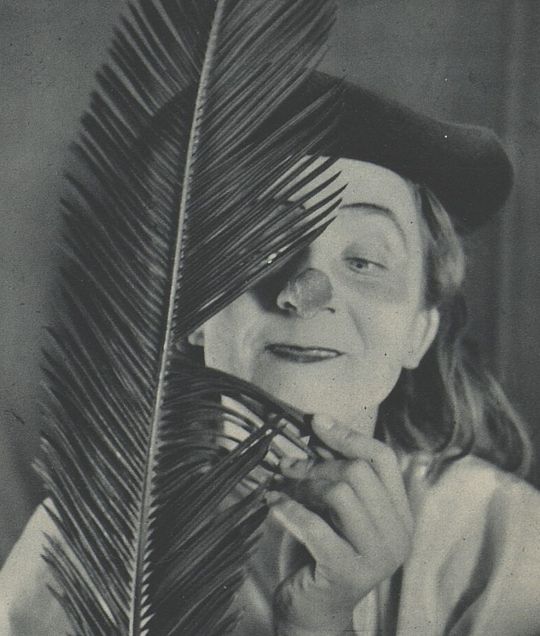Lotte Goslar

Lotte Goslar (1907-1997) was a German-born dancer, choreographer, and pantomime artist. She grew up in Dresden and studied dance under two pioneers of the expressionist Ausdruckstanz movement, Mary Wigman and Gret Palucca. In the early 1930s, she continued to develop her individual performance style while touring with Palucca’s company and working in Berlin cabarets and night clubs.
Goslar fled Germany after Hitler rose to power in January 1933. In Zurich, she joined Erika Mann’s anti-fascist cabaret, the Peppermill (Die Pfeffermühle). In response to censorship and Nazi riots, the cabaret eventually moved to Prague, where Goslar joined the avant-garde Liberated Theatre (Osvobozené divadlo) as a dancer and choreographer. In late 1936, Goslar moved to New York to continue performing with the Peppermill before it disbanded in February of 1937. Unlike some of her fellow European performers, she remained in the United States; her silent performances captured the interest of American artists and produces and earned her contracts in New York and on national tours.
In 1943, Goslar moved to the west coast to join the Turnabout Theatre, a company of marionette puppeteers in Hollywood that would heavily influence the formation of Goslar’s own Pantomime Circus in 1954. It was during this decade that Goslar choreographed Bertolt Brecht’s 1947 production of Galileo and taught movement classes to Hollywood actors. Her company, the Pantomime Circus, toured nationally and internationally for over three decades.
Goslar’s work resists categorization, combining elements of dance, gestural theatre and pantomime, and clowning. Her performances often conveyed a spirit of optimism and light-hearted humor, and her contributions to the history of mime theatre, as demonstrated in the writing of Annette Thornton, cannot be overstated.
For more information on Lotte Goslar’s life and work:
- Lotte Goslar Papers – New York Public Library
- “Lotte Goslar (1907-97)” – Dance Magazine
- “‘Grandma always danced’: The Mime Theatre of Lotte Goslar” – Annette Thornton